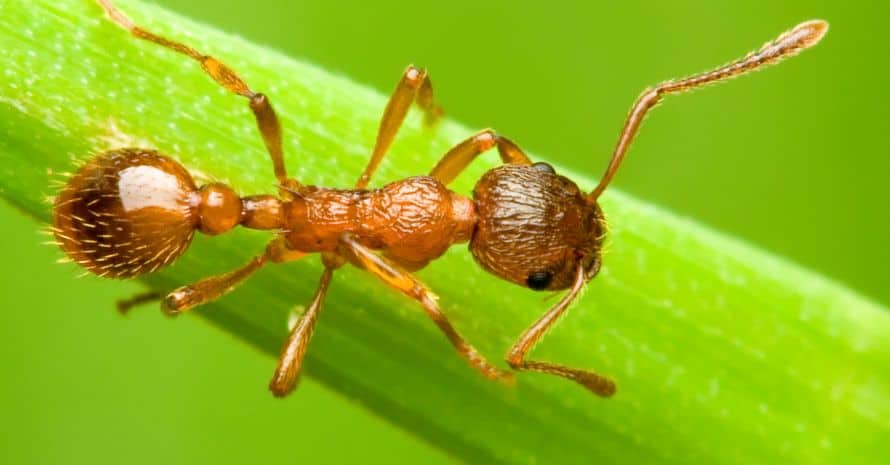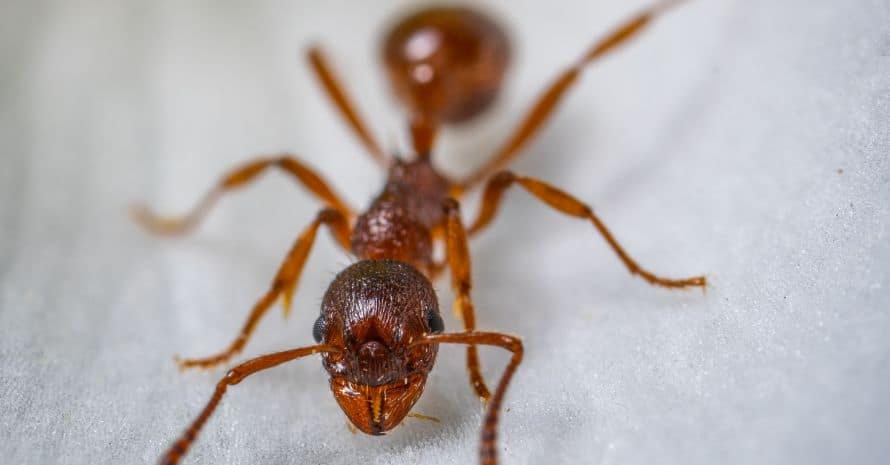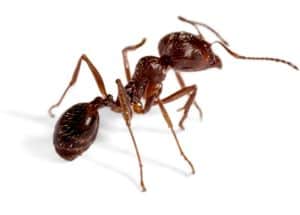Have you ever wondered whether insects have a heart, ants in particular? Does it function similarly to the human one? Yes, an ant has a heart. The heart is a muscular organ that pumps blood throughout the ant’s body. The blood of an ant is red and contains hemocyanin, which is a copper-containing protein that gives blood its color. While the ant’s heart is not as complex as that of a human, it’s nonetheless an amazing organ to study. It’s a constant source of movement for these insects, pumping blood clockwise to keep them alive. Read on to know more about the ant’s anatomy.
Structure of an Ant
Ants are undoubtedly one of the most interesting insects in the world. Though they are tiny, they’re also very strong. They can lift things many times exceeding their weight. They can also run very fast.

Skeleton and body
The outer ant’s skeleton is hard. Since the exoskeleton is made up of a tough material called chitin, it protects the ant’s body and helps it to keep its shape. It also protects its internal organs from being crushed. The body of the insect is divided into three parts: a head, a thorax, and an abdomen. The abdomen is the back section of the body, and it contains the ant’s digestive system and reproductive organs. It has six legs, two antennae, and two compound eyes.
Head
The head of an ant is small and round, equipped with two antennae. These are long, thin, sensitive attachments that the ant uses to touch and smell its surroundings. Despite this creature being small, it has a brain. An ant can see with the help of compound eyes. Each eye is made up of numerous small lenses. It gives the ant a wide field of vision.
Mouth
As for the mouthpart, the ant has a pair of mandibles, which are large jaws, and a tongue. The insect uses the tongue to lick up food and the mandibles—to chew the food into smaller pieces. It also has a stinger on its rear end, which serves to inject venom into prey. The insect uses venom to kill or paralyze the prey so that it can eat it later.
Limbs
The middle section of the body is the thorax, to which the legs and wings are attached. Ants have long and thin legs with joints so that they can move in any direction. The legs are also very strong, which enables the insect to carry heavy loads.
[su_youtube url=”https://www.youtube.com/watch?v=O0-BkCnn8-M”]
Features of the Ant’s Circulatory System
Ants have an amazing circulatory system that allows them to pump blood all the way to the tips of their long legs. This system is so efficient that ants can run for long periods of time without getting tired. Since they are perfect runners, it might make you wonder: How many hearts do ants have? Just one, like humans, but it’s a key to the entire ant’s circulatory system.
The heart is a long, tube-like structure that spreads throughout the length of the body. It’s divided into several chambers, each of which is filled with blood. This system is used to transport oxygen and nutrients around the ant organs and to remove waste products. It’s considered a very primitive form of circulation and can be found in other simple animals such as spiders and crabs.
As blood flows through the chambers of the heart, it’s pumped by special muscles. These muscles contract and relax, pumping blood through the heart and out to the rest of the body.
Here is one more thing I find amusing in ants: They can control their heart rate! When they rest, their heart rate slows down to about 150 beats per minute. However, when they’re active, their heart rate can go up to 300 beats per minute. The reason is that ants use their hearts to regulate their body temperature. When they’re cold, their heart rate increases to warm their bodies up. If they’re hot, the heart rate increases to cool their bodies down.
Are There Ants Without a Heart?
Some people might think that ants don’t have hearts because they’re too small. However, now you know that ants have a heart, just like people. You can’t meet an ant without a heart: If it’s running, it has a vital organ pumping blood throughout the body. Without it, ants would not be able to survive.

FAQ About Ant’s Anatomy
Though now you know the basic facts about the ant’s structure, there are a lot of peculiarities that might fascinate you as well. Read this section with my answers to the commonly asked questions and become 100% ant-aware.
Why are ants so strong?
There are many reasons why ants are strong. One cause is that they have a very efficient circulatory system. These insects also have potent mandibles or jaws which they use to bite and munch food. Their bodies are also very tough and resilient, meaning they can withstand a lot of damage. Due to the efficient respiratory system that allows them to take in oxygen and get rid of carbon dioxide very quickly, ants can keep working for long periods without fatigue.
Do ants have brains?
Yes, but the antэы brain is very small. It’s so small that it would be hard to call it a “brain” by human standards. However, it’s still a brain, just a very simple one. The ant’s brain is made of a few hundred thousand neurons.
Where is an ant’s heart?
An ant’s heart is a long, tubular structure that runs over the full length of the body. The heart pumps hemolymph, which is equivalent to blood, through the body. It is equipped with a series of valves that open and close in a coordinated manner. The heart is responsible for supplying oxygen and nutrients to the ant’s tissues and organs.
Can ants feel pain?
We don’t really know. However, some scientists believe that ants do feel pain because they have a simple nervous system.
Tiny Hearts, Great Athletes
Being one of the smallest creatures on the planet, it’s no surprise that ants have very small hearts. The heart of an ant is only about the size of a poppy seed! However, don’t let its size fool you: This little organ is essential for the ant’s survival. During its lifetime, an ant travels great distances and lifts objects that are many times more than its body weight. All these activities are powered by a tiny, yet mighty heart.
What do you think about the ant-related facts you have just read? Have you discovered anything new? I would appreciate it if you could share your impressions about this topic in the comments below.

